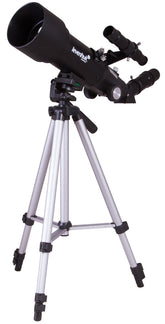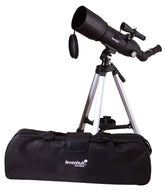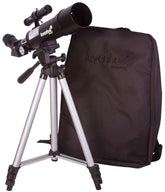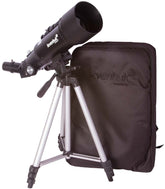What does a microscope consist of?
 A classic microscope consists of three main parts: optical, illuminating and mechanical. The optical part includes eyepieces and objective lenses; illuminating – illumination sources, a condenser and a diaphragm. The mechanical part traditionally includes all the rest of the elements: a tripod, a revolving nosepiece, a stage, focusing system and more. These parts altogether allow exploring the micro world.
A classic microscope consists of three main parts: optical, illuminating and mechanical. The optical part includes eyepieces and objective lenses; illuminating – illumination sources, a condenser and a diaphragm. The mechanical part traditionally includes all the rest of the elements: a tripod, a revolving nosepiece, a stage, focusing system and more. These parts altogether allow exploring the micro world.
What is a “microscope diaphragm”: let’s talk about the illumination system
Proper illumination is very important for observations, as well as the optics quality of the microscope. LED lights, halogen lamps, a mirror – different illumination sources can be used in a microscope. Each has advantages and disadvantages. Illumination is divided into upper, lower or combined illumination. Location of illumination influences what slides you can study under a microscope (transparent, semi-transparent or non-transparent).
Under a stage where a microscope slide is placed, there is a microscope diaphragm. It can be disk or diaphragm. A diaphragm is designed for regulating illumination intensity: you can use it to regulate a width of an optical beam that comes from an illuminator. A disk diaphragm is a small plate with holes of different diameter. It is usually installed on amateur microscopes. An iris diaphragm consists of many petals that can be used to smoothly change the diameter of a translucent hole. An iris diaphragm is often used in professional level microscopes.
Optical part: eyepieces and objective lenses
Eyepieces and objective lenses are the most popular spare parts of the microscope. Not all microscopes though allow changing these accessories. The optical scheme forms a magnified image. The better and more advanced the optical scheme, the sharper and clearer the image. However, the highest optics quality is only required in professional level microscopes. Amateur research requires standard glass optics that provide 500x-1000x magnification. We recommend avoiding plastic lenses – image quality is often disappointing in such microscopes.
Mechanical elements
Any microscope includes elements that allow a researcher to control focus, regulate position of a studied specimen and set up the working distance of an optical tool. These are all mechanical elements of a microscope: coaxial focusing mechanisms, mechanical scale and stage clips, focus adjustment knobs, a stage and more.
We have tried to tell you what a microscope consists of and have briefly introduced you to the parts of a classic optical microscope. You will find a microscope’s section here – welcome to our online store!
Levenhuk
March 2018












